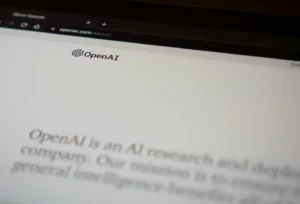Ever since language models like ChatGPT have become popular and more accessible than ever, the field of natural language processing (NLP) has completely transformed.
Perhaps the most popular application of these language models are conversational AI assistance, by generating human sounding texts.
The applications have branched out to content creation as well. The rapid rise of technology like this brings with it concerns and issues with sustainability and accessibility.
The more typical Large Language Models have proven to be less convenient for businesses and researchers with limited resources.
Alternatively, the “Super Tiny Language Models” (STLMs), have emerged as a likely solution. They are designed to be as capable as the high performing NLPs while addressing the challenges associated.
These models are significantly smaller in size, with a reduced parameter count, yet capable of achieving competitive accuracy levels.
Popularization of STLMs and implementation can easily democratize NLP tech while being more accessible, sustainable and efficient.
What are Super Tiny Language Models (STLMs)?
Super Tiny Language Models (STLMs) are a new class of language models that prioritize efficiency and sustainability without compromising performance.
Unlike their larger counterparts, STLMs are designed to have a significantly reduced parameter count, often by 90% to 95%, resulting in a much smaller model size.
This compact design not only minimizes computational and energy requirements but also enables deployment on resource-constrained devices, such as smartphones and IoT systems.
The motivation behind developing STLMs stems from the growing concerns about the environmental impact and accessibility challenges associated with LLMs.
While LLMs have undoubtedly advanced the field of NLP, their immense computational demands and energy consumption have raised questions about their long-term sustainability.
Additionally, the high resource requirements of LLMs have made them inaccessible to many businesses and researchers with limited budgets or infrastructure.
STLMs have the potential to revolutionize various industries and applications by bringing advanced NLP capabilities to a wider range of users.
From mobile apps and virtual assistants to IoT devices and edge computing, STLMs can enable seamless integration of language processing capabilities while minimizing resource requirements and environmental impact.
Uses of STLMs
The compact and efficient nature of Super Tiny Language Models (STLMs) makes them versatile and well-suited for various platforms and applications.
Their lightweight design allows for seamless integration across various contexts:
Mobile Applications: STLMs are ideal for mobile apps, requiring less memory and processing power, making them perfect for smartphones.
They enable offline functionalities such as nearly-human chatbots, language translation, text generation, and text summarization.
By reducing reliance on cloud services, STLMs lower costs and enhance the user experience with faster, on-device processing.
Web Browsers: STLMs have the potential to revolutionize the web browsing experience by integrating advanced language processing capabilities directly into web applications.
These compact models can provide seamless language-related features, such as intelligent auto-completion while typing, real-time grammar correction, and sophisticated sentiment analysis.
The latter functionality is particularly noteworthy, as it enables STLMs to detect emotionally charged or insensitive language and suggest more nuanced, contextually appropriate alternatives.
Internet of Things (IoT) Devices: STLMs enable functions like voice recognition, natural language processing, and personalized assistance in IoT devices without heavy reliance on cloud services.
This optimizes both performance and privacy, allowing for entirely local processing without the need for external consultation.
Edge Computing: In edge computing environments, where data processing occurs at the source, STLMs shine.
Deployed on edge devices like routers, gateways, or edge servers, they can execute language-related tasks in real-time, lowering latency and reducing reliance on central servers, improving cost-efficiency and responsiveness.
Performance and Accessibility Benefits of STLMs
Despite their reduced size, STLMs have demonstrated competitive performance on various NLP benchmarks when compared to much larger models.
For instance, a 50M parameter STLM achieved accuracy levels comparable to models with parameter counts in the billions, such as TinyLlama (1.1B parameters), Phi-3-mini (3.3B parameters), and MobiLlama (0.5B parameters).
The true power of STLMs lies in their ability to significantly reduce computational and energy requirements while maintaining high performance.
This not only addresses sustainability concerns but also increases accessibility for businesses and researchers with limited resources.
Techniques for Developing Efficient STLMs
To achieve their compact size and efficient performance, STLMs employ a variety of techniques and strategies.
One key approach is byte-level tokenization, which involves embedding each character in the input string and processing them through a smaller, more efficient transformer architecture.
This method dramatically reduces the number of parameters needed, resulting in a more compact model.
Another technique used in STLMs is weight tying, which involves sharing weights across different model layers.
This approach further decreases the parameter count, contributing to the overall efficiency of the model.
Additionally, knowledge distillation, a process of transferring knowledge from a larger “teacher” model to a smaller “student” model, is often employed to maintain performance while reducing model size.
Efficient training strategies, such as data augmentation and curriculum learning, are also crucial in the development of STLMs.
These techniques ensure that the models can be effectively trained even on consumer-grade hardware, further enhancing their accessibility and affordability.
Performance and Accessibility Benefits of STLMs
Despite their reduced size, STLMs have demonstrated competitive performance on various NLP benchmarks when compared to much larger models.
For instance, a 50M parameter STLM achieved accuracy levels comparable to models with parameter counts in the billions, such as TinyLlama (1.1B parameters), Phi-3-mini (3.3B parameters), and MobiLlama (0.5B parameters).
The true power of STLMs lies in their ability to significantly reduce computational and energy requirements while maintaining high performance.
This not only addresses sustainability concerns but also increases accessibility for businesses and researchers with limited resources.
STLMs can be trained and deployed on modest hardware, making advanced NLP capabilities more affordable and attainable for a broader audience.
Companies and researchers across various domains have already begun exploring and implementing STLMs in their applications.
For example, Netguru, a software development company, successfully integrated an STLM on iPhone devices, enabling users to generate comprehensive content from minimal text inputs, summarize documents, and even create creative writing samples – all on a mobile device with limited computing power.
As the field of NLP continues to evolve, STLMs are poised to play a crucial role in revolutionizing the landscape.
Researchers are actively exploring new frontiers, such as multi-task STLMs capable of handling diverse NLP tasks, few-shot learning approaches to adapt STLMs to new domains with limited data, and domain adaptation techniques to improve performance on specialized tasks.
However, it is essential to address ethical and responsible development considerations as STLMs become more prevalent.
Privacy, bias, and fairness issues must be carefully examined and mitigated to ensure these powerful language models are deployed in a transparent and accountable manner.
Businesses and researchers are encouraged to explore and experiment with STLMs, staying ahead of the curve in this rapidly evolving field.
By embracing these efficient and sustainable language models, they can contribute to the development and adoption of cutting-edge NLP technologies while promoting environmental responsibility and accessibility.
Closing Thoughts
The emergence of STLMs represents the evolution of NLPs. They provide the high-performance benefits of Large Language Models while being resource efficient and more accessible.
Features like compactness in size, reduced parameter count make this attainability of NLP possible for enterprises and researchers with limited resources.
The STLMs are transformative due to their democratization, enabling a range of users the accessibility to language models without compromisation of performance.
The demand for sustainability and accessibility of AI is increasing with time. Factors like efficiency and sustainability of language models have become crucial.
STMLs are therefore shaping the future of NLP models.





